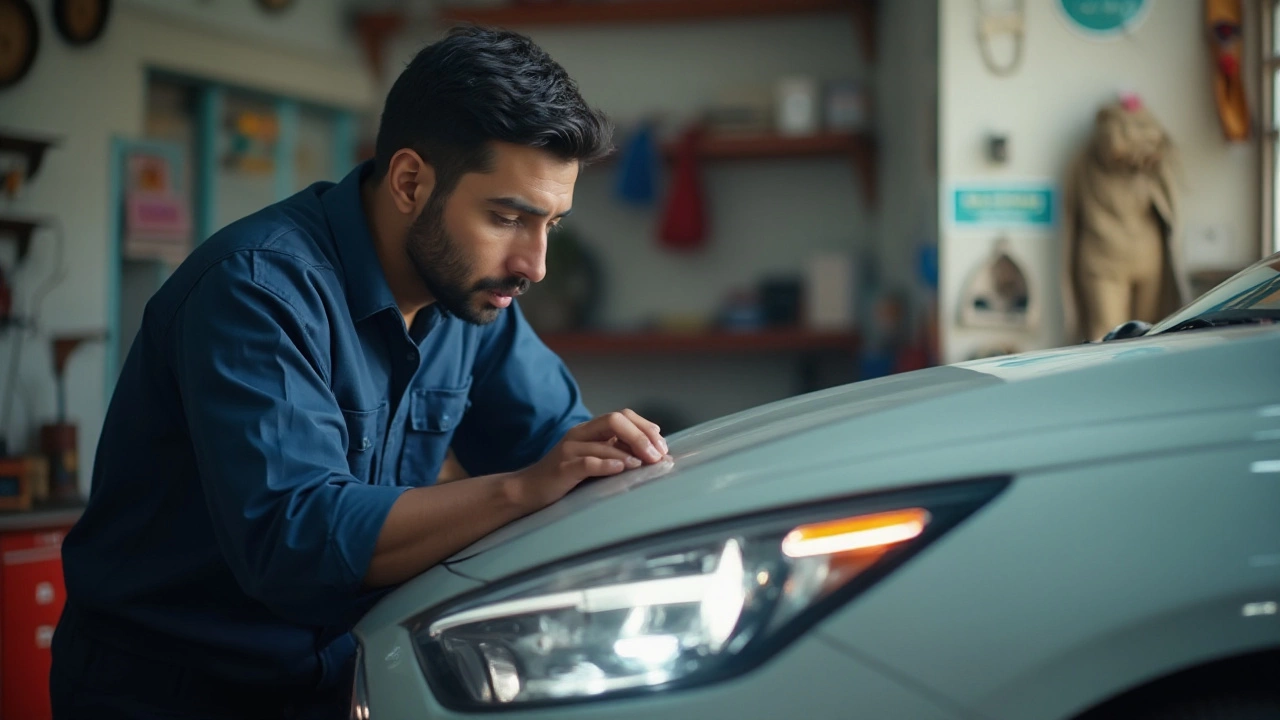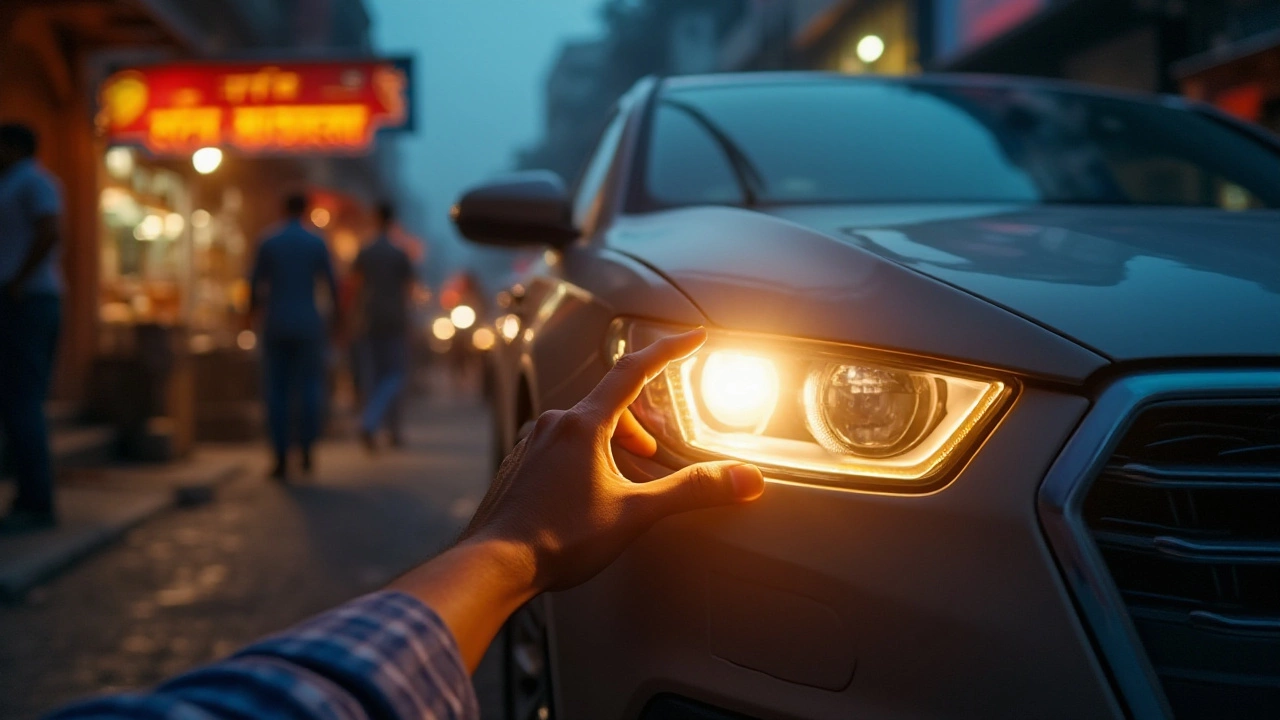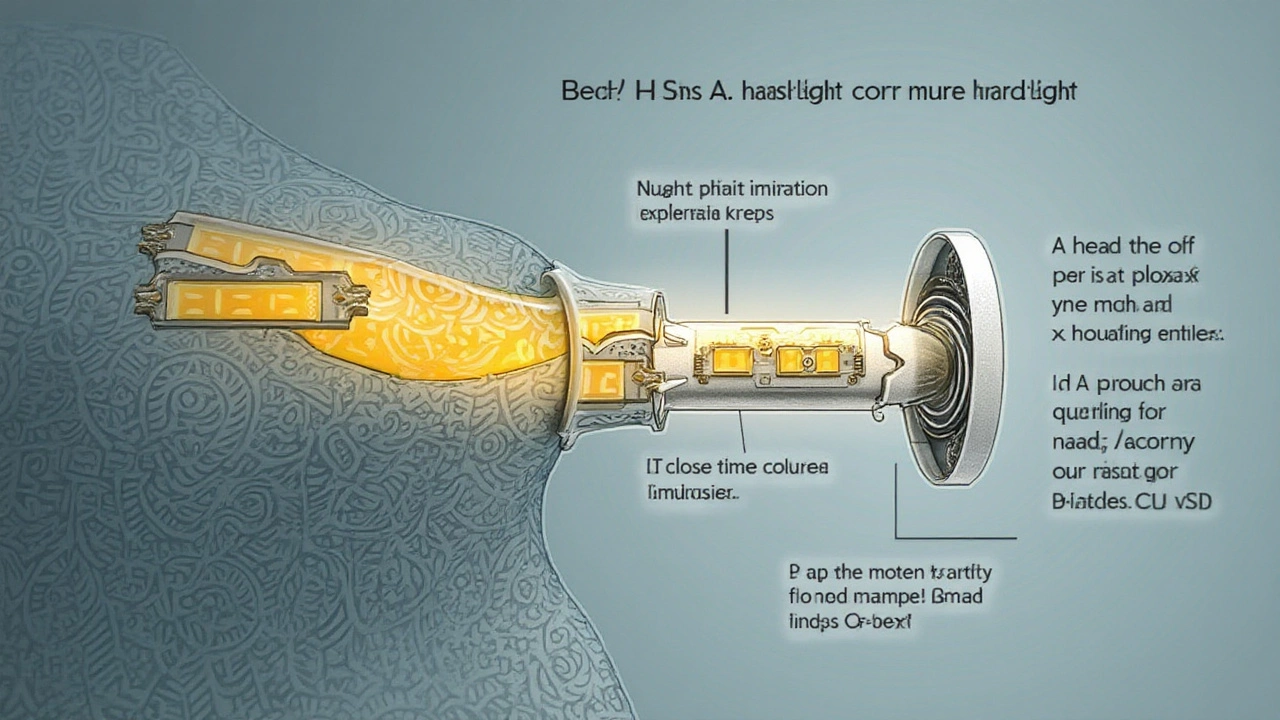How to Handle Built-In LED Headlight Burnout Effectively
 Jan, 25 2025
Jan, 25 2025
LED headlights have revolutionized the way we light up our roads. Their efficiency and longevity are unparalleled, yet they aren't invincible. Car owners might still find themselves dealing with dimmed or completely failed lights sooner than expected.
As this lighting technology embeds itself into more vehicle designs, understanding what happens when a built-in LED headlight burns out becomes crucial. Taking the right steps and making informed choices aren’t just about seeing the road ahead, it’s about safety and reliability. Let’s delve into the journey of LEDs, what happens when they fail, and explore what's next when they do.
- Understanding LED Headlights
- Signs and Causes of Burnout
- Replacement Options
- Maintaining LED Headlights
Understanding LED Headlights
LED technology has emerged as a marvel in the automotive industry, reshaping the way we think about vehicle lighting. LEDs, or Light Emitting Diodes, convert electricity directly to light using a semiconductor, distinguishing them from their incandescent and halogen counterparts that rely on filament heating. This method inherently boosts efficiency, where a greater portion of energy is focused on illumination rather than heat production. This characteristic makes LED headlights a popular choice among car manufacturers and consumers alike.
One might wonder, what makes LED headlights such a game-changer? It's primarily their exceptional lifespan. Traditional headlights, such as halogens, have an average lifespan of about 500 to 1,000 hours of use. In stark contrast, LEDs can continue to shine brightly from anywhere between 15,000 to 30,000 hours. That's virtually a lifetime in terms of typical driving hours, resulting in fewer replacements and more savings for the car owner. Another impressive feature is their ability to deliver immediate illumination at full brightness with just a flick of a switch, which can be crucial when navigating dimly lit roads.
In terms of performance, LEDs also provide directional lighting, which means that the light is focused exactly where it's needed without scattering excessively. This not only improves visibility but also reduces the glare for oncoming traffic. Beyond performance, manufacturers also appreciate LED headlights for their compact size, allowing creative freedom in car design. You might recall seeing some futuristic-looking headlights; that sleek appearance is often achieved thanks to the nature of LEDs.
"LED headlights have become the hallmark of modern automotive design, emphasizing efficiency and elegance," notes John Davis, automotive tech specialist.Of course, no technology is without its challenges. While the diodes themselves are relatively resistant to failure, the intricate circuitry, cooling systems, and accompanying electronics add complexity that requires careful engineering and consideration.

Signs and Causes of Burnout
LED headlights have established a reputation for their durability and energy efficiency. However, these technological marvels aren't immune to malfunctions and burnout. Recognizing the signs of impending failure can not only save you time and trouble but also enhance safety standards. The most prominent sign of a failing LED headlight is a noticeable dimming compared to the usual brightness levels. If your once vibrant headlights are casting muted and less intense beams, it is time to inspect them more closely. Occasional flickering is another telltale sign that shouldn’t be overlooked. It might not only indicate a bulb issue but could signal an underlying electrical problem that requires immediate attention.
Detecting the cause of burnout in built-in LED headlights demands a closer look at the typical culprits. One of the most frequent causes is overheating. Despite being energy-efficient, LEDs can endure thermal buildup leading to deterioration of internal components. Poor ventilation or a malfunctioning cooling system can exacerbate this scenario. On the other hand, voltage fluctuations can strain the internal circuitry, destabilizing the flow of electricity and ultimately resulting in burnout. Environmental factors also play influential roles. Continuous exposure to moisture and dirt can degrade the protective sealants of the headlights, accelerating the burnout process. Improper installation might also cause undue stress on LED systems, leading to premature failure. Manufacturing defects, although rare, can’t be ruled out entirely.
LED headlights, due to their unique architecture and operation, often handle things differently than traditional incandescent or halogen bulbs. For example, a burned-out LED won't always go out completely at once. Instead, some diodes within the composite assembly may continue to operate, albeit inconsistently. It's a phenomenon that makes diagnosing LED problems a bit challenging at times. To gain insights into predictive failures and technological advancements, consider this illumination from a renowned expert:
"Understanding how LEDs respond to failure is key to improving their reliability," notes Dr. Lin Huang, an LED technology specialist. He further stresses the need for manufacturers to focus on designing heat-resistant and adaptive thermal management systems for improved LED performance.
Interestingly, research shows that the average lifespan of LED headlights is projected to exceed 20,000 hours under optimal conditions. To put it into perspective, an average car owner might only need to consider replacement once every three years if the headlights are used for about 3-4 hours daily. The table below offers an insightful snapshot into the typical lifespan of various automotive lighting solutions:
| Lighting Type | Average Lifespan (Hours) |
|---|---|
| Halogen | 450-1,000 |
| Xenon HID | 2,000-3,000 |
| LED (Factory Built-In) | 20,000-30,000 |
Being acutely aware of these dynamics allows vehicle owners to maintain peak performance and avoid unwelcome surprises on darker and less navigable roads. It encourages a proactive approach towards automotive lighting maintenance, ensuring not just seamless operation but bolstering safety parameters beyond mere expectation.

Replacement Options
When the unfortunate moment arrives, and your built-in LED headlights give up the ghost, the first step is not to panic. While these headlight systems are indeed sophisticated, there are several remedies available to address a burnout. One of the major challenges lies in the fact that, unlike traditional bulbs, many built-in LED lights cannot be simply unplugged and replaced with a quick swap. This is due to their integral design, which often incorporates the light source as part of the entire lighting unit. However, solutions exist, and it often begins with consulting the car manufacturer or a skilled automotive technician who specializes in electrical components.
There are usually two main paths to consider: full assembly replacement or retrofitting. For some makes and models, replacing the entire headlight assembly may be the only option if you want to maintain the integrity and warranty of the vehicle’s lighting system. While this might sound daunting, many modern car designs are equipped with accessible compartments that can be unclipped or unscrewed with relative ease, making the process smoother than one might expect. On occasions, this can be a costly endeavor, which is why evaluating your vehicle's warranty before proceeding is key.
"LED lights are designed to last a vehicle's lifetime, but they aren't infallible. When you need a replacement, it's essential to approach the task informed and prepared," suggests an automotive lighting specialist from Auto News Weekly.
Retrofitting is another popular option for those who wish not just to replace but to upgrade the lighting system. Although this involves more technical know-how, it allows vehicle owners to potentially improve the brightness and efficiency of their headlamps with newer LED technology. This might entail purchasing individual components that fit inside existing casing or completely new bulb-housing kits compatible with your car make. Not only does this method provide owners greater control over their lighting preferences, but it can also be more economical in the long term.
In terms of do-it-yourself solutions, one might consider looking at detailed manuals or video guides from trusted automotive repair websites. Some users have found success by sourcing aftermarket parts. However, the risk here involves possibly voiding warranties or encountering compatibility issues with the LED replacement setup. To hedge this risk, ensure that parts purchased come with good reviews and quality assurances, which should guarantee performance close to the originals.
Regardless of the path chosen, it’s essential to ensure that the quality of light remains high. Poorly chosen replacements may lead to inefficient light spread on the road or, in the worst cases, may not comply with highway safety standards. To keep track of upgrades and compliance, refer to local vehicular safety legislation or standards organizations that focus on automotive lighting. It's always wise to keep salty roads or harsh weather conditions in mind, as these might affect the longevity of replacements significantly, emphasizing the need for durable, well-sealed components.
Before making any decision, consider consulting with trusted auto repair professionals or fellow vehicle owners in forums. Gathering insights can help you make a more informed decision, ensuring that the transition from faulty to fully functioning headlights is as seamless as possible. Approach the situation with a comprehensive understanding of both the technological and practical sides of the replacement options. Remember—bright roads mean safer travels!

Maintaining LED Headlights
When it comes to car maintenance, LED headlights might not be the first thought on your list, yet their upkeep is vital for a smooth driving experience. Unlike traditional bulbs, maintaining these modern marvels requires a slightly different approach. Regular inspections can significantly increase their lifespan. This isn't just about getting longevity—it’s about ensuring consistent light quality and safety. Make it a habit to check your lights every few months for any signs of dimming or uneven brightness. Catching these early signs can prevent unexpected burnout.
Environmental exposure can also play a role in the life of your built-in LED fixtures. Dust, moisture, and road debris can lead to gradual degradation. Investing in protective covers or films can help mitigate these issues. Learning how to properly clean these headlights is crucial, as abrasive materials can scratch the surface and reduce the effectiveness of the protective coating, thereby exposing LEDs to potential damage. A soft cloth paired with a mild cleanser can often do the trick, ensuring your headlights remain clear and efficient.
Just like any other vehicle component, LED headlights benefit from a regular check with a professional. Many mechanics offer headlight inspections as part of a general maintenance package. These professionals can spot wiring issues or early wear signs that might escape an untrained eye. Remember, headlights aren't only about seeing what's ahead but also about being seen by others. As cars evolve and technology advances, our approach to maintenance must adapt. A well-maintained LED ensures safety and clarity, on and off the road.
While the initial allure of LED headlights might be their longevity, their care isn't just once in a decade. Engage in proactive maintenance—be it cleaning, professional checks, or protective covers—and enjoy the brilliant, reliable light that LEDs promise. This approach not only preserves the lighting quality but also aligns with sustainable practices by reducing waste from unnecessary replacements.